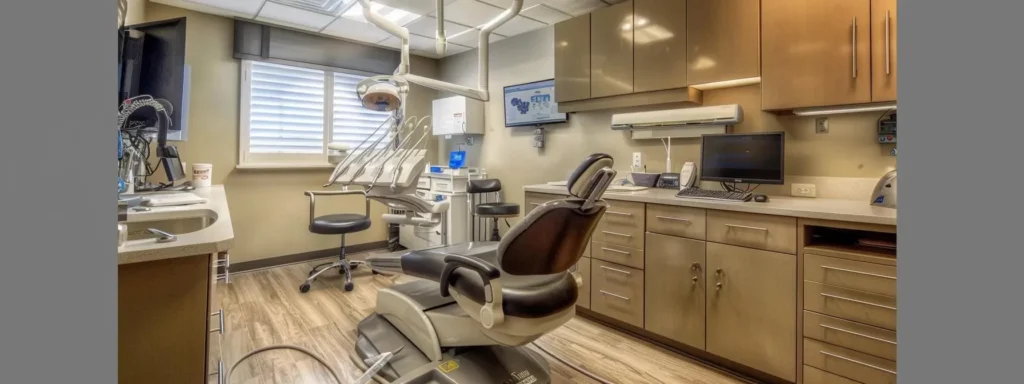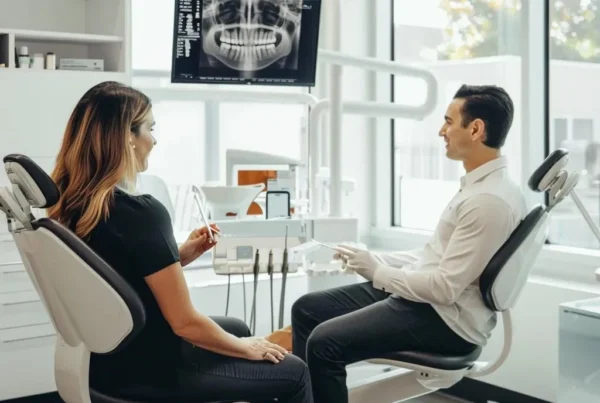When your dental crown gets damaged, you’re probably wondering whether it can be fixed or if you need to start over with a brand new one. Here’s the thing: this decision isn’t just about convenience or cost. It’s about making the right choice for your tooth’s long term health and your overall comfort.
The truth is, not all crown damage is created equal. What works for one situation might be completely wrong for another. Understanding what factors actually matter in this decision can save you from making a choice you’ll regret later.
There are really three key things that determine whether repair or replacement makes sense. Each one plays a crucial role in protecting both your investment and your oral health. Let’s break down what your dentist is really looking at when they make this recommendation.
What Your Crown Is Made Of Really Matters
You might not think much about what material your crown is made from, but it makes a huge difference when damage occurs. Different materials respond to damage in completely different ways, and this affects your options more than you might expect.
Metal crowns are the tough guys of the dental world. They can take a beating and often bounce back from damage that would spell doom for other types. If you have a metal crown with some damage, there’s a decent chance it can be repaired rather than replaced.
Ceramic crowns are beautiful and look incredibly natural, but they’re also more fragile when it comes to repairs. Once a ceramic crown is compromised, trying to patch it up often doesn’t work well long term. Most of the time, replacement is the better option for maintaining reliability.
The material factor isn’t just about what’s possible to fix. It’s about what will actually hold up over time and give you the protection your tooth needs. Your dentist knows which materials play well with repairs and which ones don’t.
Assessing How Bad the Damage Really Is
Not all crown damage looks the same, and definitely not all damage requires the same response. The extent of what’s wrong with your crown is probably the biggest factor in deciding what comes next. It’s like the difference between a scratch on your car and a major dent.
Minor chips and superficial cracks often fall into the repairable category. These might just need some smoothing or bonding to get back to normal function. Think of it as a quick touch up rather than a major overhaul.
When you’re dealing with deep fractures or significant structural damage, that’s when replacement usually becomes necessary. This type of damage compromises the crown’s ability to protect your tooth, and trying to patch it up could leave you vulnerable to bigger problems.
The key is being honest about what constitutes “minor” versus “major” damage. Your dentist can see things that might not be obvious to you, including how the damage affects the crown’s structural integrity and protective capabilities.
The Health of Your Tooth Underneath
Here’s something that might surprise you: sometimes the crown damage isn’t the real problem. What’s happening to the tooth underneath can be way more important than what’s wrong with the crown itself. This is where things can get a bit more complex.
If the crown damage has revealed or worsened underlying tooth decay, you’re looking at a bigger project. The decay has to be addressed first, and that often means the crown needs to come off anyway. At that point, replacement usually makes more sense than trying to salvage the old crown.
Structural issues with the tooth itself can also tip the scales toward replacement. When the foundation isn’t solid, even a perfectly repaired crown won’t perform well long term. Your dentist needs to ensure the tooth can properly support whatever restoration goes back on.
Sometimes crown damage is actually a blessing in disguise because it reveals problems that were developing silently. Catching these issues early and addressing them properly can save the tooth and prevent much more serious complications down the road.
Why Timing Matters More Than You Think
When you discover crown damage, your first instinct might be to wait and see how it goes. That’s actually one of the worst things you can do. The timing of your response can literally make the difference between a simple fix and a complex dental emergency.
Even tiny cracks in crowns can become highways for bacteria to reach your tooth. What starts as a barely visible line can turn into a serious infection if you give it enough time. Getting these small issues addressed quickly often means simpler and less expensive treatment.
A loose crown might seem like it’s hanging in there okay, but every day it stays loose is another day your tooth is vulnerable. Food particles and bacteria can get underneath, setting up conditions for decay and gum problems that are much harder to treat later.
Infections from delayed crown repair can turn into real nightmares. What might have been a straightforward repair or replacement can become root canal therapy, extraction, or other major procedures if infection takes hold. Quick action prevents these complications and keeps your treatment options open.
Making Smart Decisions About Crown Treatment
When you’re facing crown damage, there are several key factors that should guide your decision making process. Understanding these elements helps ensure you choose the approach that serves your long term oral health best.
The decision making process involves evaluating multiple interconnected factors:
- Crack severity and location: Surface level damage versus deep structural cracks that compromise the crown’s integrity
- Material compatibility: Whether your crown’s material responds well to repair techniques or typically requires replacement
- Underlying tooth condition: The health and structural soundness of the tooth supporting the crown
- Previous repair history: Whether this crown has needed repairs before, indicating potential ongoing issues
- Cost benefit analysis: Comparing short term repair costs against long term reliability and potential future problems
These factors work together to create a clear picture of what approach makes the most sense. A crown with minor surface damage and a healthy underlying tooth is very different from one with deep cracks and underlying decay issues. Your dentist weighs all these elements to recommend the most appropriate treatment path.

What Happens During Your Crown Assessment
Walking into the dental office with a damaged crown might feel overwhelming, but knowing what your dentist is looking for can help put you at ease. The evaluation process is pretty systematic and designed to give you the clearest picture of your options.
Your dentist will start with a thorough visual examination of the crown and surrounding area. They’re looking for obvious signs of damage, but also checking for subtle issues that might not be immediately apparent. This includes examining how the crown fits against your gum line and checking for any changes in color or texture.
You’ll likely need X-rays to see what’s happening beneath the surface. These images reveal the condition of the tooth root, surrounding bone, and the interface between your crown and natural tooth. This information is crucial for determining whether the foundation is solid enough to support either a repair or replacement.
The goal of this assessment isn’t just to catalog what’s wrong, but to understand how the damage affects your crown’s function and your oral health. Your dentist will explain their findings and walk you through the pros and cons of different treatment approaches.
Professional Solutions for Every Situation
The good news about crown damage is that modern dentistry has solutions for virtually every scenario you might encounter. Whether you’re dealing with minor cosmetic issues or major structural problems, there are effective ways to restore your crown’s function and appearance.
For minor damage like small chips or surface cracks, repair techniques can often restore the crown to full function. This might involve bonding materials, smoothing rough edges, or applying protective coatings. These approaches preserve most of the original crown while addressing the specific problem areas.
When damage is more extensive, replacement becomes the better long term solution. Modern crown materials and techniques can create restorations that look and function even better than your original crown. The process has become much more efficient, with many practices offering same day crown fabrication.
Your dental team will consider factors like your bite patterns, aesthetic preferences, and lifestyle when recommending specific materials and approaches. The goal is always to provide a solution that serves you well for many years while fitting seamlessly into your daily life.
Prevention Strategies That Actually Work
The best approach to crown damage is preventing it from happening in the first place. While accidents can happen to anyone, there are proven strategies that significantly reduce your risk of crown problems and extend the life of your dental work.
Smart prevention involves consistent daily habits and regular professional care:
- Daily oral hygiene: Thorough brushing and flossing to prevent decay around crown margins and maintain gum health
- Regular dental checkups: Professional monitoring to catch potential issues before they become problems
- Protective appliances: Night guards for teeth grinding and sports guards for athletic activities
- Dietary awareness: Avoiding habits like chewing ice, hard candies, or using teeth as tools
- Stress management: Addressing teeth grinding and clenching that can damage crowns over time
These prevention strategies work together to create an environment where your crowns can function optimally for many years. The key is consistency rather than perfection. Small daily efforts in oral hygiene and being mindful of what you ask your teeth to do can prevent most crown damage scenarios.
Your Path to Restored Dental Health
Dealing with crown damage doesn’t have to be stressful when you understand your options and work with a dental team that prioritizes your long term oral health. The key is taking action promptly and making decisions based on solid information rather than assumptions or convenience.
Modern dental techniques make both crown repair and replacement more comfortable and efficient than ever before. Many procedures that once required multiple visits can now be completed in a single appointment, getting you back to normal function quickly.
The most important thing is partnering with a dental practice that takes the time to properly evaluate your situation and explain your options clearly. You deserve to understand not just what needs to be done, but why one approach makes more sense than another for your specific circumstances.
Remember that addressing crown damage promptly almost always leads to simpler treatment and better outcomes. What might be a straightforward repair today could become a complex restoration project if you wait too long. Your oral health is worth the investment in timely, professional care.
Schedule your consultation Today!
Laguna Heights Dental
30231 Golden Lantern, Ste D
Laguna Niguel, CA 92677
(949) 363-1200
https://lagunaheightsdental.com/
See More Reviews From Laguna Height Dental. View information about local places in our community. Get Driving Directions to Our Practice
Frequently Asked Questions
Is a cracked dental crown considered a dental emergency?
A cracked crown definitely warrants prompt attention, though it may not be a true emergency unless you’re experiencing severe pain. Even minor damage can escalate quickly, so it’s best to contact your dentist within a day or two. Quick action often means simpler treatment and prevents the issue from becoming a real emergency later.
Can a cracked dental crown be repaired, or does it need replacement?
Whether a cracked crown can be repaired depends on the extent and location of the damage, plus what material your crown is made from. Minor chips and surface cracks can often be fixed, but deep structural damage usually requires replacement. Your dentist can determine the best approach after examining the crown and underlying tooth.
What should I do to care for my damaged crown until I can see the dentist?
Keep the area clean with gentle brushing and avoid putting stress on the damaged crown by eating soft foods and avoiding chewing on that side. If you experience sensitivity, over the counter pain relief can help manage discomfort. Most importantly, schedule a dental appointment as soon as possible to prevent further damage or complications.





